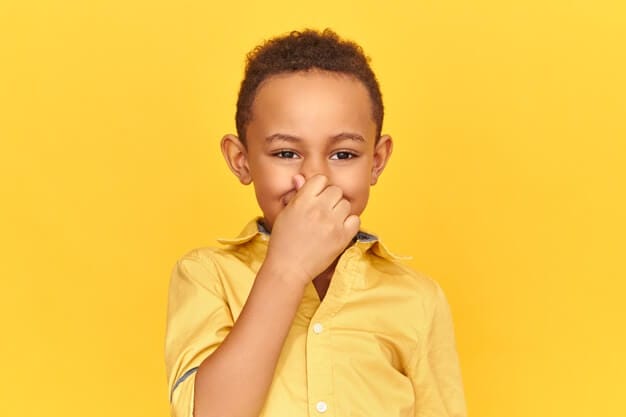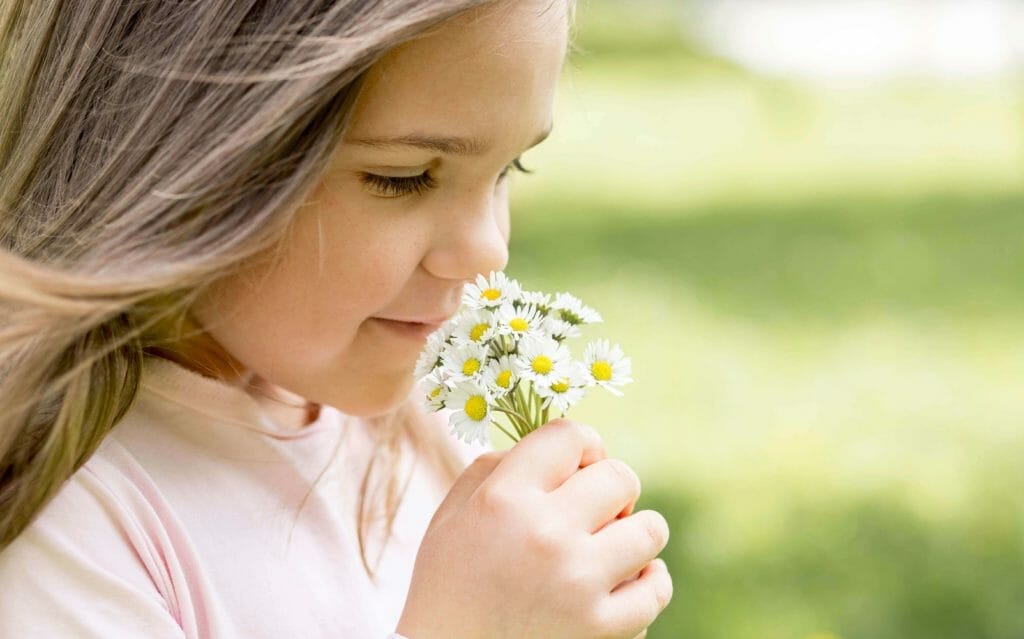The olfactory system, or our sense of smell, is one way for our brain to receive information about our environment. Within our nose, sensory receptors receive and pick up information about the odors around us, which are then passed through channels of nerves in our nervous system to reach our brain. The olfactory system is highly complex and discriminates between many different odors. In return, it helps humans understand which smells are strong, faint, pleasurable, foul, and even dangerous! Although this system plays an important role in our ability to sense smell, it also is closely related to our limbic system, which is responsible for emotions, behavior, and memory and as well as our sense of taste, which help to create all the flavors that we taste in the food that we consume (Boesveldt S., Parma V.; 2021).

Children with healthy olfactory systems are able to tolerate pleasant and unpleasant smells and odors within their environment without extreme reactions. A functioning olfactory system assists children in identifying the “good” smells (smells that are safe, pleasant, connected with positive emotions) from the “bad” smells (smells that are unpleasant, displeasing, or reminders of negative experiences). For children with an over-responsive olfactory system, smells may be a constant source of anxiety. Not only are orders more intense, but associations made between scents and emotions they experience can become more extreme for them. In comparison, children who have under-responsive olfactory systems may need to work much harder to receive the input their body needs, thus often interfering with their daily routines (Brookes J.C.; 2010).
Some common “red flags” or signs that a child may be experiencing an over or under olfactory response include:
Over-responsive
· Strong reactions to smells that may be unnoticed by peers (i.e. refusal to try certain foods or be in the same room as others eating them)·
. Avoids certain scented materials or objects that contain cologne, perfume, etc.
Under-responsive
· Does not seem to notice unpleasant odors or drastic changes in smells within their environment
· Strong need to smell objects (i.e. soaps, markers, clothing, gasoline, other strong odors).

There are many ways to incorporate activities to assist in providing your child with olfactory input. Listed below are some suggestions you can try with your child. These suggestions can become opportunities for you and your child to explore their sense of smell that are imbedded within their daily routines:
· Acknowledge hypersensitivities your child has to smell or odors, and their emotions that are linked to them. If your child tends to become upset or frustrated about someone eating a specific type of food, acknowledge their reaction and identify an appropriate response with them (i.e. leaving the room temporarily, moving away, reminding that the smell will not harm them)
· Practice desensitization to smells in small gradual increments. You can start with small doses or exposures to small amounts and then increase as you observe your child’s own cues and reactions.
· Discuss scents throughout the day! Put labels on different items and discuss emotions or any memories tied to them (i.e. baking, laundry, flowers, crafts)
· Create and play games with your child or discover activities that incorporate items that contain scents. Examples include: cotton balls with essential oils, scented candles, scratch and sniff snickers, scented crayons or markers, food/drink, playdoh, and lotions.
It is important to note that different smells can be calming and some can also be alerting. Some examples include lavender (calming) and citrus or peppermint (alerting). Be sure to trial different scents with your child and be aware of their responses and reactions. Please make sure to check for any allergies prior to trying or utilizing scents during activities. Last but not least, enjoy all the fun as you explore!
References:
- Brookes J. C. (2010). Science is perception: what can our sense of smell tell us about ourselves and the world around us?. Philosophical transactions. Series A, Mathematical, physical, and engineering sciences, 368(1924), 3491–3502. https://doi.org/10.1098/rsta.2010.0117
- Boesveldt S., Parma V. (2021). The importance of the olfactory system in human well-being, through nutrition and social behavior. Cell Tissue Res. https://doi.org/10.1007/s00441-020-03367-7

